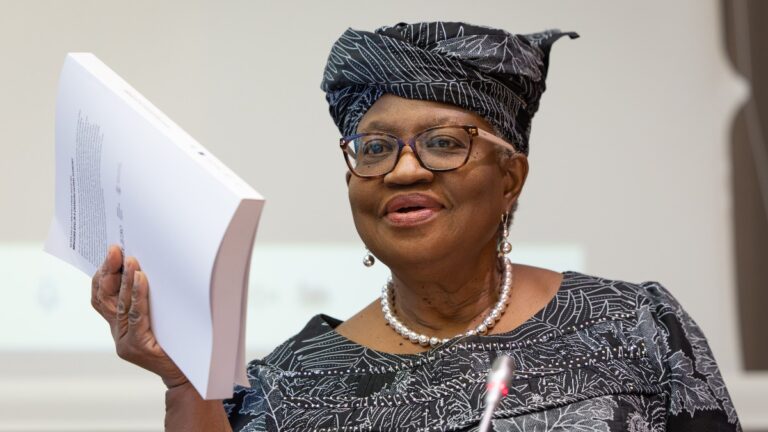
North Korean Supreme Leader Kim Jong-un
Commentary
 By Venkatesh Raghavan*
By Venkatesh Raghavan*
The United Nations’ bar on testing of ballistic missiles and nuclear weapons have in recent weeks been repeatedly violated by North Korea, drawing sharp reactions from both the United States and its allies. North Korea’s launch of ballistic missiles, the latest being on October 19, 2021, make the UN and other countries see red in wake of their capacity to carry powerful payloads, in addition to having more reach and ability to fly faster. The concerns expressed by UN and its member countries got accentuated owing to the fact that the missiles were launched from a submarine, rendering it undetectable and yielding it a range that far exceeds the limits of the Korean peninsula.
North Korea’s official news agency KCNA stated that the missiles launched would be difficult to track owing to the employment of advanced control guidance technologies. .The state media described the missiles as hypersonic long-range weapons. The latest launch happened on October 19, as part of a flurry of tests North Korea carried out, though was suspected to be a short-range submarine-launched ballistic missiles. Neighboring China said that it’s time to observe and react with restraint. At the same it remarked that currently, the situation on the Peninsula is at a “critical juncture”.
With news pouring in about South Korea developing its own weapons system, the global view has emerged that an arms race has begun between the two hostile neighbours. South Korean capital city, Seoul just concluded conducting its largest weapons exhibition earlier this week that included the display of a fighter jet and guided missiles. Reacting to North Korea’s latest spate of ballistic missiles, the intelligence chiefs from the United States, South Korea and Japan are slated to meet and discuss the issue later this week at Seoul.
North Korea’s Asian neighbour China, though not openly critical of the country’s move, have all along maintained that caution and restraint have to be exercised in dealing with the new developments in the interest of world peace. The word is yet to be out on how US President Joe Biden treats the current provocation.
China’s continued stress on restraint is also being viewed by observers from the West as a tacit support for North Korea’s nuclear ambitions. The concern being expressed is that of formation of a strong Asian Bloc that will emerge as an alternative to the current US hegemony in the global power equation. A Financial Times report recently claimed that China tested hypersonic missiles twice this summer in July and August, to which China claimed that the test reported by media was a “routine test of spacecraft to verify the technology of spacecraft’s reusability”. The US has repeatedly expressed concerns over China’s development of hypersonic missile technology. The Americans, however, themselves successfully tested hypersonic weapon component prototypes and will conduct a flight test of the hypersonic missile in fiscal year 2022, which began on October 1, according to the US Department of Defense statement of October 21, 2021.
The faceoff with the US is ever increasing in the Communist bloc. “The US is the first country in the world to conduct the research and development of hypersonic weapons. It is now still developing and even spreading hypersonic missile technology and investing trillions of dollars to upgrade its “nuclear triad” force. We have noted that the US expressed concerns over China’s normal spacecraft test and play up the “China threat” theory. Can the US explain to the international community what it intends to do with its development of hypersonic weapons? And for what reason does the US worry about others? Does that mean the international community has every reason to express concerns over US moves?” Chinese foreign office spokesperson Wang Wenbin had stated in Beijing on October 22. China now “urges” the US to fully respect other countries’ right to develop normal defense capacity, and stop seeking military buildup “by hyping up the so-called “military threat” of others”.
The emerging geo-strategic alliances in Asia, with Russia too forging an alliance with China while publicly criticising US-led NATO countries for creating “closed military alliances”, there is also the possibility of the US engaging Pyongyang in talks in an attempt to display its dominant global position, which ostensibly got a setback after its trooops’ unceremonious withdrawal from Afghanistan after the Taliban took charge of Kabul. The US obviously is trying to be more assertive with its President Joe Biden, only a few days back, reminding both China and Russia of the American military prowess.
The open hostilities between the two Koreas ended way back in 1954 with the United States declaring an armistice. However, the situation on ground between the both has continued to stay simmering for long.
North Korean leader, Kim Jong-un refuted that his country had any aggressive intentions or for a war to break out in the near future. He averred that North Korea was merely building up its self-defense capabilities to counter the threat perceptions emanating from enemy countries. The North Korean leader squarely blamed the United States for the seemingly hostile development. As preparations are on for the fresh round of negotiations over the table, it may be recalled that the previous round of talks between North Korea and the United States drew a blank owing to failure on part of the two nations to arrive at an agreement over de-nuclearization
As anticipation over the round of talks to be held between the US and North Korea keeps mounting, the latter’s intransigence in not giving up to its nuclear ambitions might prove to be a major dampener for any progress to be achieved.
Besides, after former US President, Donald Trump’s endeavor to initiate a dialogue process on denuclearization, not much has changed. President Biden too has expressed his keenness to hold talks to yield complete denuclearization of the Korean peninsula.
– global bihari bureau





